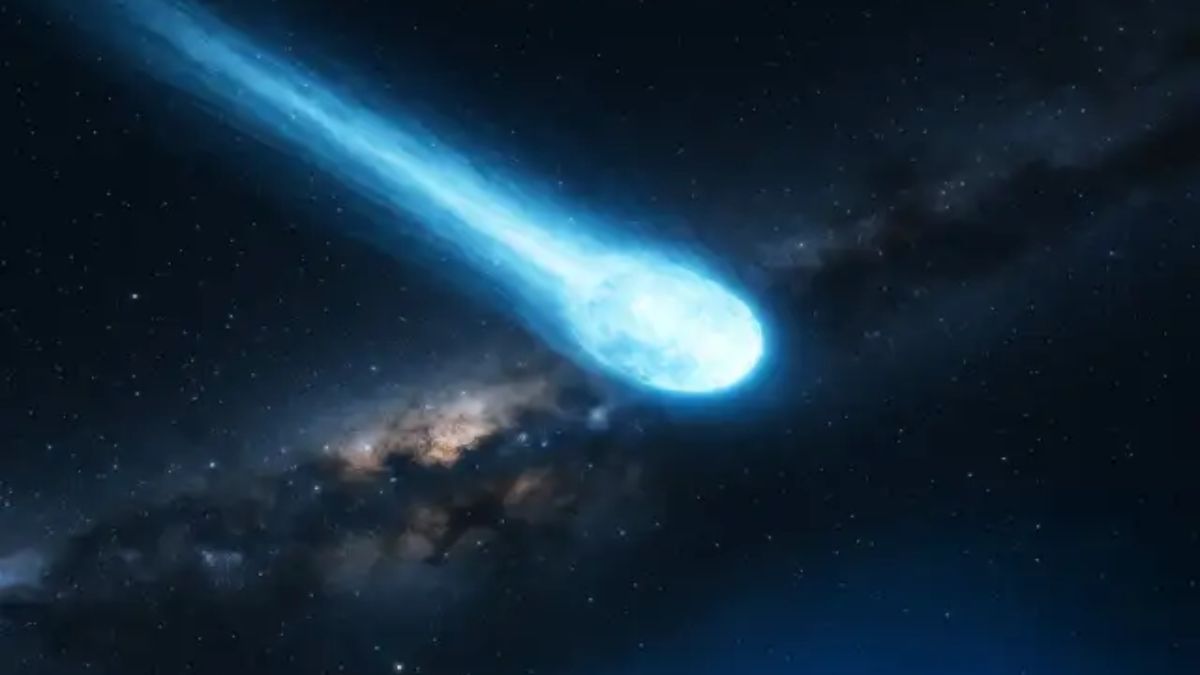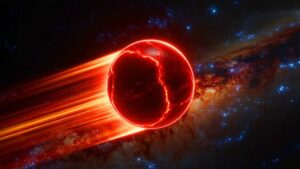On July 1st, scientists detected something strange speeding through our solar system: 3I/ATLAS, the third interstellar object ever discovered. It’s already generating headlines, questions, and more than a little speculation.
Is it a comet? Probably. But could it be something more? Some researchers suggest it may even be a camouflaged alien probe. Sound wild? Let’s break down the facts before jumping to Star Wars-level conclusions.
Object
3I/ATLAS is part of a very exclusive club. Only two other interstellar objects have ever been seen:
- 1I/‘Oumuamua in 2017
- 2I/Borisov in 2019
These objects come from outside our solar system, flying in from the vast unknown. They don’t orbit the Sun like regular comets or asteroids. Instead, they zip through at strange angles and incredible speeds, making a one-time pass before vanishing into deep space.
Behavior
So what’s weird about 3I/ATLAS?
- Speed: It’s moving unusually fast
- Color: It has a strange reddish glow
- Trajectory: It’s not flying in a straight line — small shifts in its path have caught scientists’ attention
It’s not enough to scream “alien spaceship,” but it is enough to raise scientific eyebrows. A team of 20 international researchers published a paper saying it’s most likely a comet — but they also admit there are enough oddities to keep monitoring it for possible technosignatures.
Theory
Why even consider it might be something artificial?
That’s where astronomer Avi Loeb comes in. Known for his controversial ideas, Loeb has suggested that the object’s acceleration may not be completely natural. Could it be controlled movement, like a spacecraft adjusting its path?
He’s not alone. Some researchers speculate that extraterrestrial probes might travel disguised inside comets or asteroids, using natural space rocks as cosmic camouflage. After all, humans have done similar things — like launching Voyager, New Horizons, and other spacecraft into interstellar space.
So if we’re doing it, why couldn’t someone else out there be doing the same?
Signs
What do scientists look for when searching for technological signs in space objects?
Here are some common clues:
| Signal Type | What It Means |
|---|---|
| Anomalous Trajectories | Movement not caused by gravity alone |
| Unnatural Colors | Reflectivity that doesn’t match rock or ice |
| Unusual Spectra | Chemical signs that don’t fit known objects |
| Radio/Laser Emissions | Possible attempts at communication |
| Strange Shapes | Geometry that doesn’t occur in nature |
So far, 3I/ATLAS hasn’t checked all these boxes. But the trajectory shifts and its strange appearance are enough to keep it under the spotlight.
Comparisons
It’s hard not to compare 3I/ATLAS to its predecessors:
- ‘Oumuamua had no comet tail and accelerated mysteriously. Some even suggested it could be a light sail, like a solar-powered alien craft.
- Borisov, on the other hand, behaved like a textbook comet, releasing gas and dust as it neared the Sun.
3I/ATLAS seems closer to Borisov, showing signs of typical cometary behavior — but the anomalies leave the door open for debate.
Curiosity
Why does this matter? Because in a universe as massive as ours, every strange object is worth studying. What if one of them really was a sign of alien technology?
Even if it’s “just a comet,” studying it helps us understand how interstellar objects behave, how they form, and what surprises the cosmos still holds. And let’s be honest — who wouldn’t want to be the first to confirm alien technology?
Future
The launch of the LSST (Legacy Survey of Space and Time) telescope at the Rubin Observatory will change the game. With its power, scientists expect to detect between 6 and 50 interstellar objects in the next 10 years.
More data means more chances to discover something truly unique. Maybe even the answer to whether we’re alone in the universe.
Mystery
For now, 3I/ATLAS is still officially labeled an interstellar comet — but with just enough mystery to spark imagination and serious investigation.
In a universe filled with billions of stars and planets, why couldn’t one visitor be something more than rock and ice?
FAQs
What is 3I/ATLAS?
An interstellar object possibly behaving like a comet.
Why do some think it could be alien?
Its unusual path and acceleration raise questions.
Who suggested it might be artificial?
Harvard astronomer Avi Loeb raised the idea.
How is it different from ‘Oumuamua?
3I/ATLAS has comet-like features but with anomalies.
What comes next for studying it?
More monitoring and data from future telescopes.
















